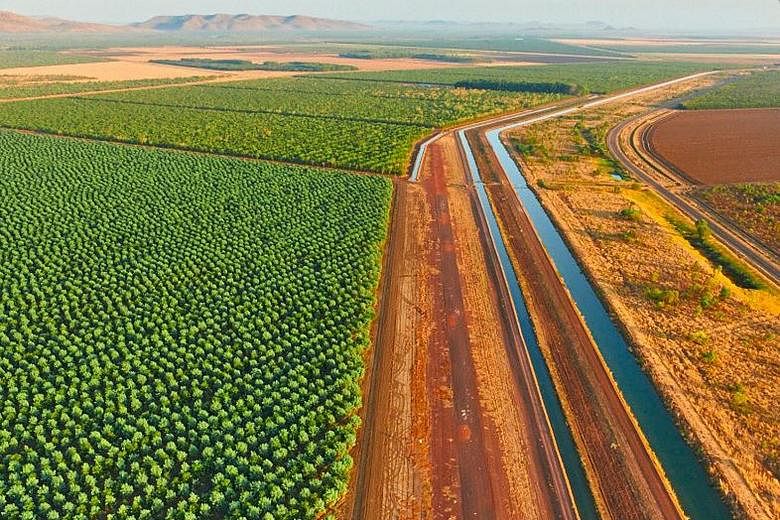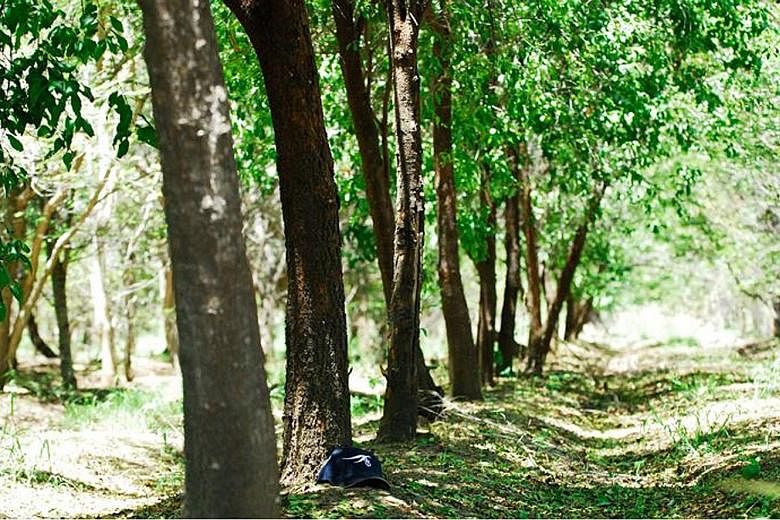PERTH (Australia) • In a climatic sweet spot running across northern Australia, 15 years of patience may be about to pay off for two of the world's biggest growers of plantation sandalwood.
The parasitic trees - prized for their aromatic wood and essential oil that is used in perfumes, cosmetics and medicines - are approaching maturity, more than a decade after they were planted.
The trees are maturing just as prices soar amid a production shortfall from the biggest producer India and rising demand from China. A kilogram of Indian sandalwood oil now sells for about US$3,000 (S$4,255), or about five times as much as silver, and prices are rising by at least 20 to 25 per cent a year, according to the South India Sandalwood Products Dealers and Exporters Association. That makes the mature trees on the Australian plantations run by TFS Corp and KKR & Co-backed Santanol Group worth about US$1,500 apiece.
"You have a fundamental supply-demand imbalance," TFS chief executive officer Frank Wilson said in an interview from Perth. "We are a price maker."
Global demand for sandalwood is set to gain fivefold to 20,000 tonnes of wood a year in the decade to 2025, according to TFS, the largest plantation operator in Australia. China will account for half of the increase, where it is used in traditional medicines, handicrafts and fragrances. That comes as South India Sandalwood Products Dealers and Exporters Association honorary secretary M.M. Gupta says supply of legally sourced sandalwood from India is limited partly because of government restrictions on production and exports.
TFS plans to raise output thirtyfold to 10,000 tonnes of timber a year from its 12,000ha of plantations in northern Australia, including a large plantation area in Kununurra.
Mr Remi Clero, the CEO of Santanol, said: "The business can be very big." Santanol currently sells the oil for just under US$3,000 per kg.
Santanol manages about 2,200ha of sandalwood in Kununurra, on the border of Western Australia and the Northern Territory about 3,000km from Perth. It first harvested trees in 2014.
India has historically been the dominant supplier but sales from government auctions plunged in recent years due to over-exploitation and smuggling. Santanol's plantation at Kununurra will be among the sources filling the gap, Mr Clero said.
Supply from India remains variable and fell to just 250 tonnes of wood a year last year, from almost 4,000 tonnes a year in 1970, according to government data. That variability increases the attractiveness of plantation supply.
"When you create a fragrance, a formula, you need to be able to give to your customers a consistent product," Mr Clero said. "They need to be able to do deals with companies like ours for 10 years or more of guaranteed supply."
India is not standing still, however. The government of Karnataka, one of the largest growers of sandalwood in India, is backing cultivation in a bid to rebuild supply. Some 470 farmers have so far agreed to join the plan covering an area of more than 800ha of land, according to the website of Karnataka Soap and Detergents, the state-backed company that oversees the programme.
Mr Gupta said there are about 2,400ha of sandalwood plantations in India, and the area planted is increasing by over 800ha annually.
Still, demand from new sectors, dwindling Indian output and the difficulty in replicating the maturing Australian plantation trees make TFS confident of the future.
The biggest growth in demand will come from pharmaceuticals and TFS is in the process of developing dermatological products to treat conditions including acne and psoriasis.
TFS customers include Estee Lauder, which uses sandalwood oil as a base note in its Pleasures brand perfume. "We need a lot more customers to absorb the supply but they are not very hard to find," Mr Wilson said.
BLOOMBERG


